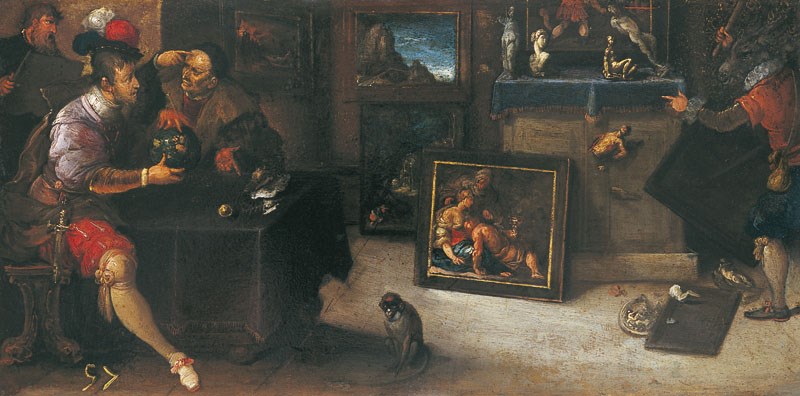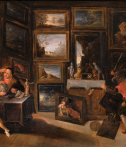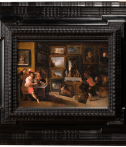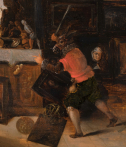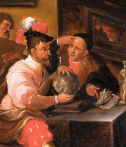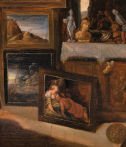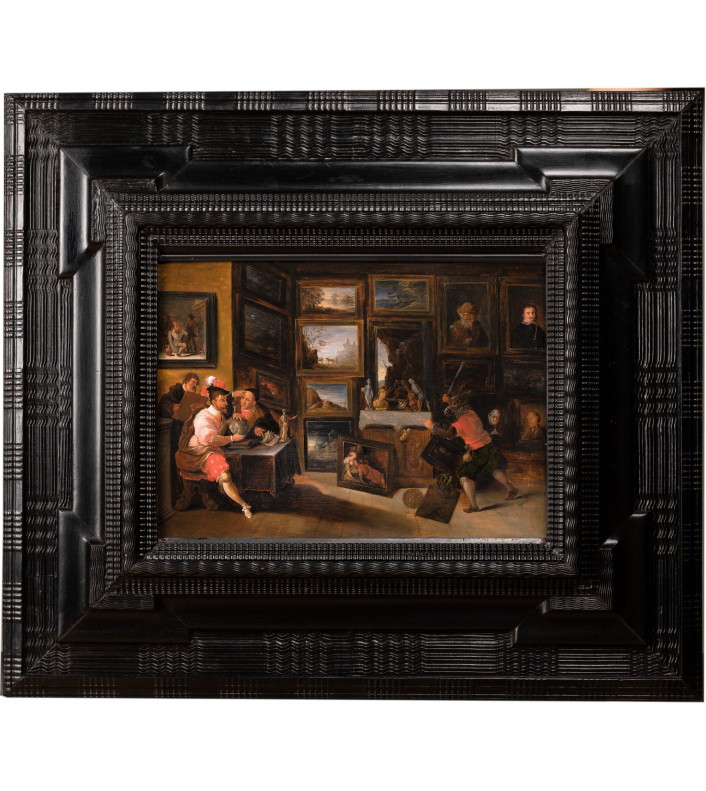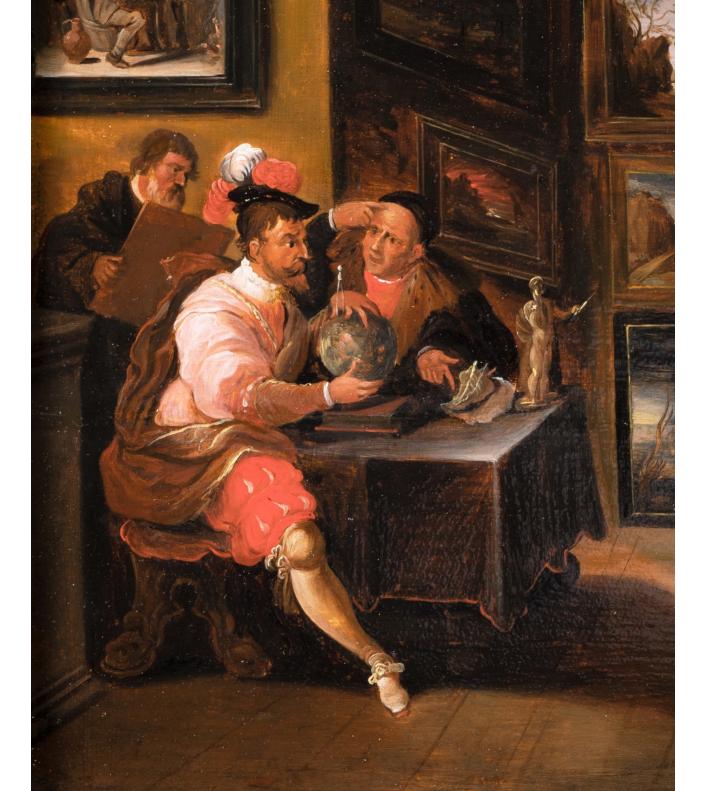Iconoclastic donkey bursting into collector's cabinet
Our panel illustrates a theme of "iconoclastic donkeys", a rare subject and it seems treated only by Frans Francken II in association with a cabinet of art collectors.
The interiors of art collectors, the first private museums, were favorite subjects of Antwerp painters of the 17th century, often representing collectors as knowledgeable connoisseurs, interested not only in the visual arts such as sculpture or painting, but also sciences such as philosophy, geography and astronomy.
Among the works of Frans II Francken there are several representations of "iconoclastic donkeys" in amateur cabinets, in reference to the iconoclasm of 1566, causing the destruction of the interior of Antwerp Cathedral.
Bringing back to life in his works the events of half a century ago allows the painter to better understand the religious agitation that reigned in the years 1610-1620 and to denounce through his works the harmful effects on the economy. Francken's position is marked by erasmism, the current which defends a compromise between Protestantism and the papacy.
The Iconoclastic Fury has long been considered by historians as a politico-popular revolt against the tyranny of the prince, but also as a socio-economic revolution of a starving people. King Philip II, very absent from his kingdom of the Netherlands, was indeed unpopular and poverty and unemployment increased dramatically.
The risk of a shift from vandalism of religious works of art to secular works in an unstable economic context is difficult to predict.
It is for this reason in our painting, as in all those from Francken's studio, the iconoclastic donkey breaks the ancient sculptures. The painter warns of the risk of transferring destructive madness to secular works of art, and not only limited to Catholic worship. A work of art is above all an artistic creation, notwithstanding its use or location.
By resorting to animal parody, the painter chooses the donkey to denounce the ravages of iconoclasm. The Renaissance donkey is a symbol of ignorance, stupidity, stubbornness, stubbornness or even blind, passive and stupid obedience.
Workshop of Frans Francken II the Younger (1581-1642)
17th century Antwerp School
Oil on oak panel
Dimensions: h. 32 cm, w. 42cm
Molded and ebonized wood frame with wide moldings, reverse profile
Framed dimensions: h. 68 cm, w. 78cm
Related works:
• A Collector's cabinet, Frans Francken II, dated 1617, Royal Collection Trust, United Kingdom (Fig. 1)

• Iconoclastic donkeys, Frans Francken II, Stadtgalerie Neubourg, Germany (Fig. 2)
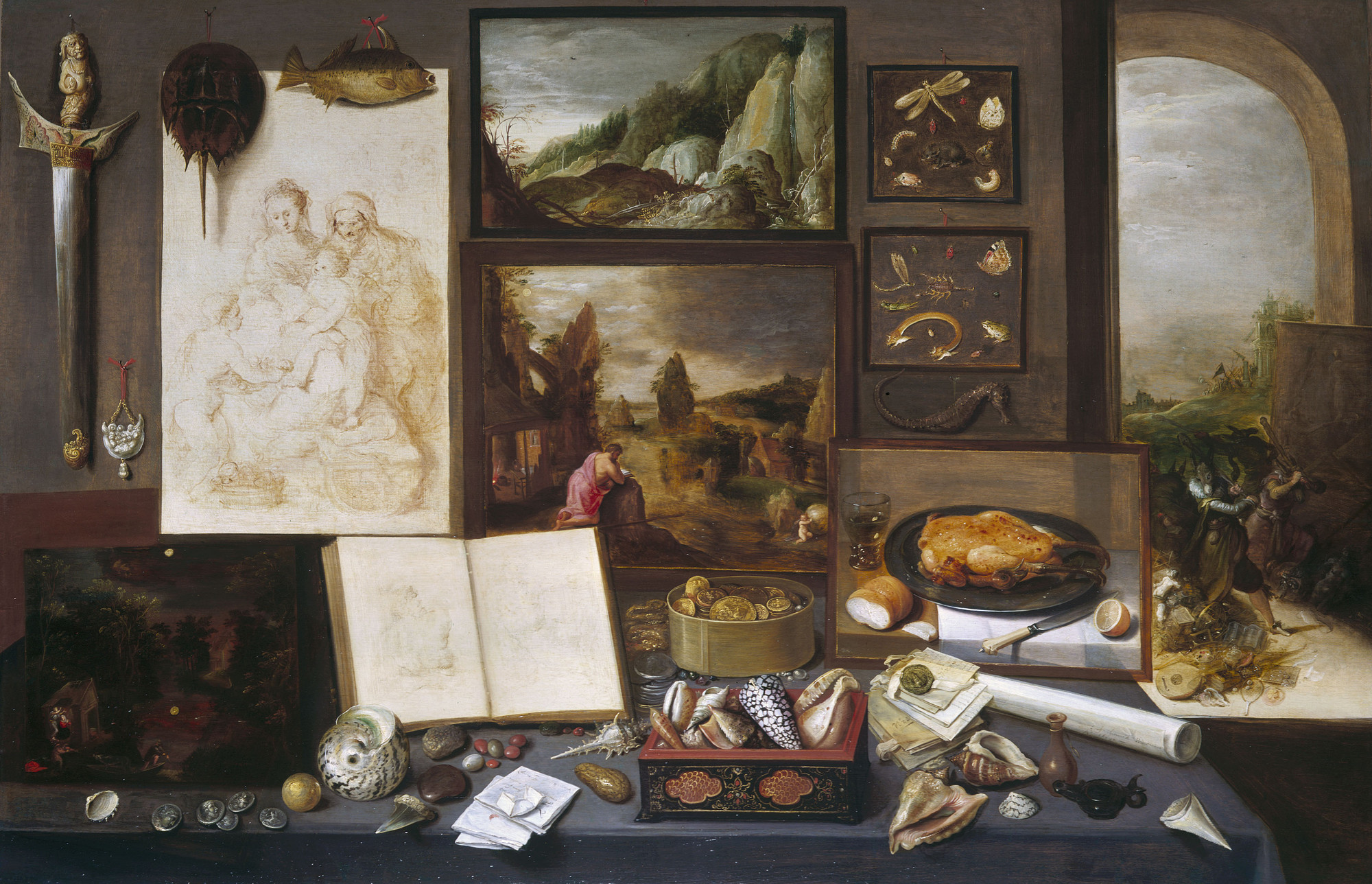
• A Collector's cabinet, Frans Francken II, Musée des Augustins, Toulouse (Fig. 3)
